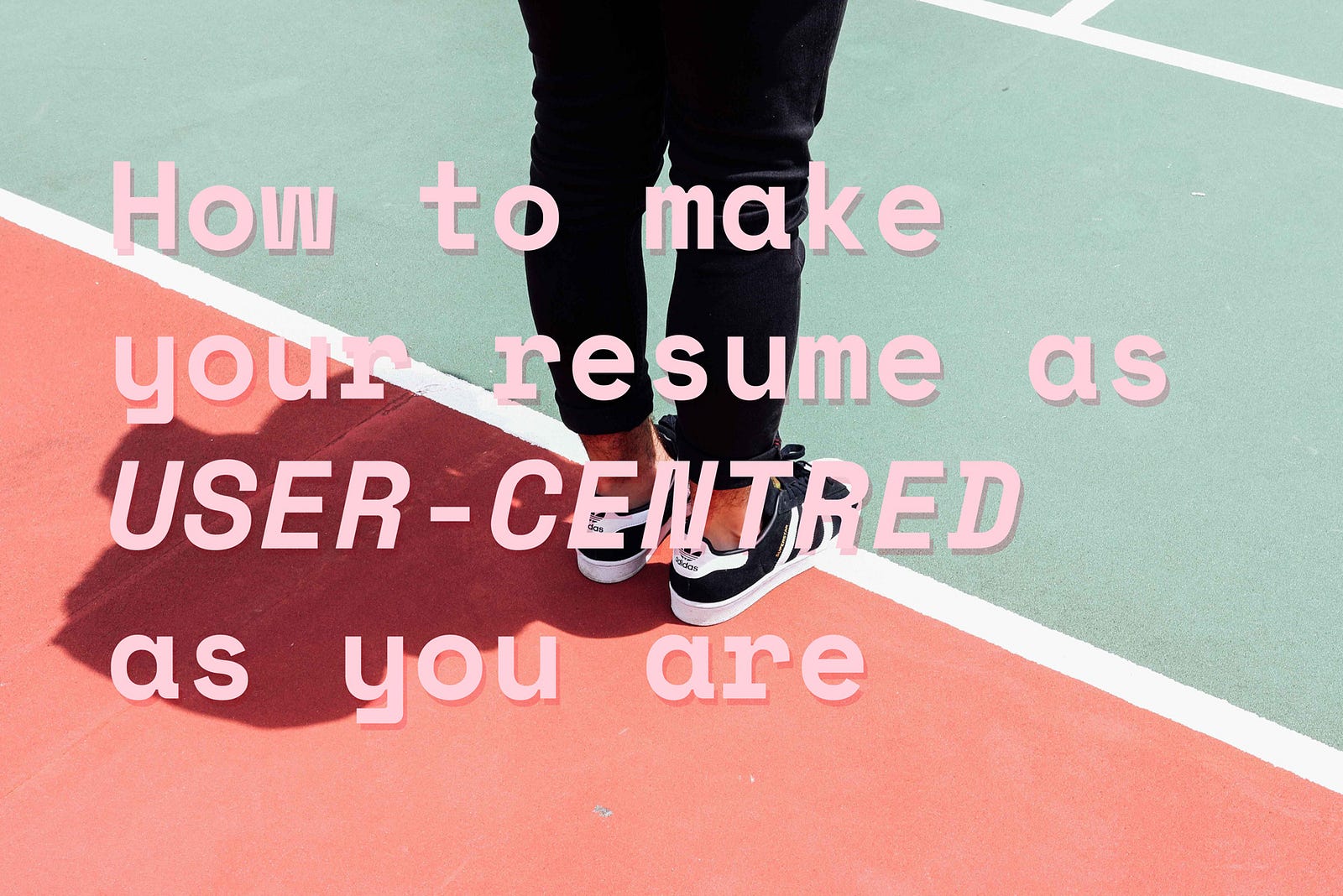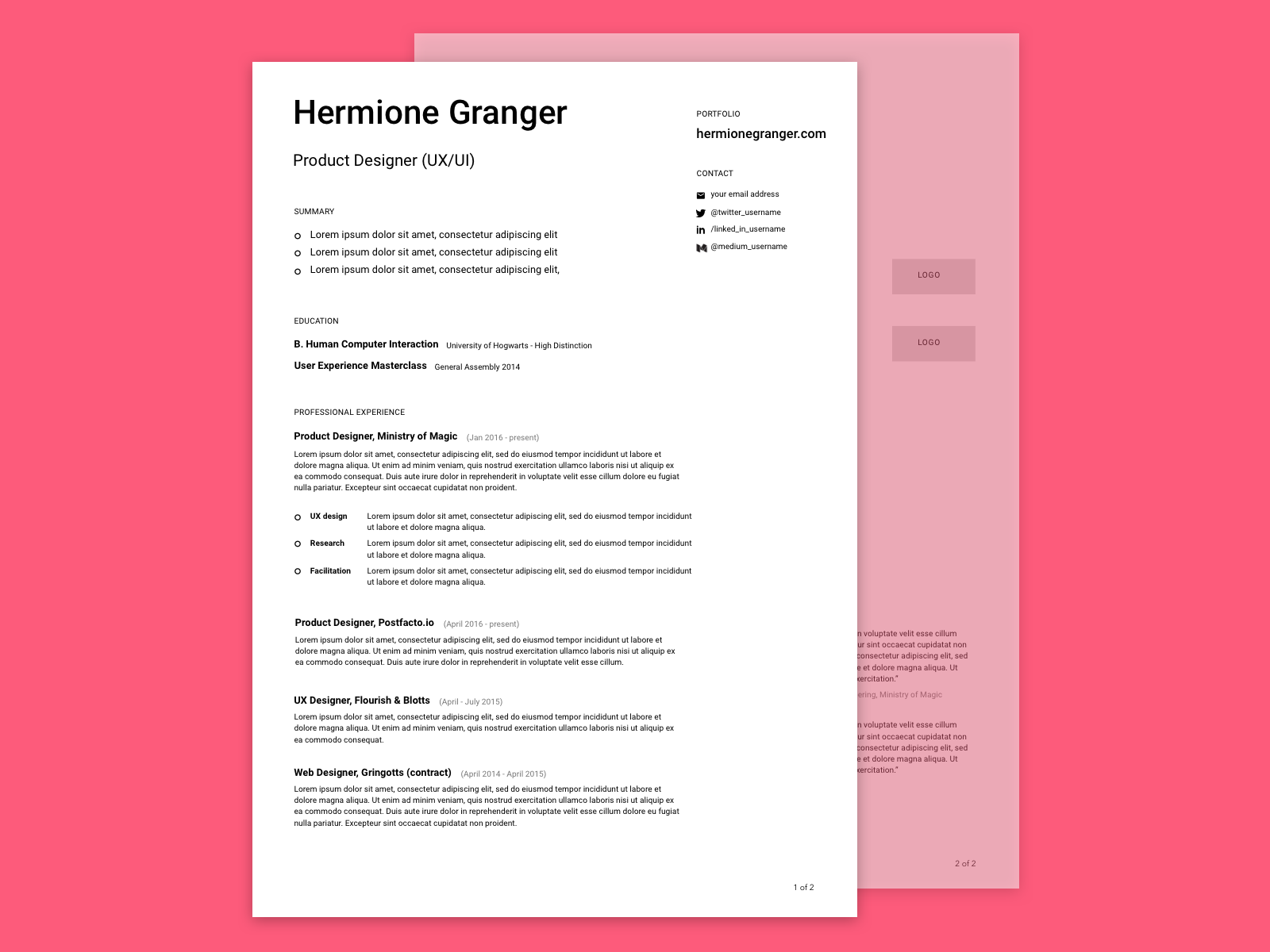Build Design Systems With Penpot Components
Penpot's new component system for building scalable design systems, emphasizing designer-developer collaboration.

medium bookmark / Raindrop.io |

Hiring designers is fun.
I like seeing people’s work, and hearing them speak passionately about the cool stuff they’ve done. I like meeting other designers from Sydney. I like the “hire a designer” process — probably a lot more than I like being on the “please hire me” side of it.
But there’s a truth I can share with you, from this side of the fence.
If you’re a designer… yes. We do hold the design of your resume to a higher standard than those of non-designers.
Why? Because your resume is probably the first time I’m seeing your design skills. So it needs to do a few things.
It needs to look good.
It needs to read well.
But most of all, it needs to work.
I want you to use your user-centred design skills on your resume just like you would any other product you design. Your resume does have a user — it’s the people who are hiring you.
So what does a resume need to do for me to think to myself this resume really works? Well! Glad you asked. Let me tell you.

Please, let me print.
I interviewed eight people in the last four weeks, and I printed all of their resumes.
In case you’re thinking — this is 2017, who prints things? — well, I do. I need to be able to glance at the resume while I chat with the applicant. I don’t want to be on my laptop during an interview, so printed is the only option.
Here’s what I just tried to print:
Only two of these four applicants are going to have the benefit of me having an easy-to-glance-at overview of their work history in front of me while we chat. That sucks, and I don’t want to do that, but in the middle of a round of hiring I literally don’t have time to read 23 pages about one person’s work history, or create a separate document with divided-up sections of someone’s resume website to make it printable.
Which of these above have indicated to me that they’ve done the one thing a user-centred designer should do above all else: think about their user and how they’ll be using the product?
It should be a PDF, probably in black and white only, with font sizes appropriate for reading in print, and no more than 4 pages long. Do a test print.
Can an interviewer glance at it and get the most important information quickly?

No need to write a book. 4 pages is plenty.
I shouldn’t feel like I need to upload your resume onto my Kindle to get through it.
As an interviewer, I have probably fifteen to twenty minutes (if we’re being generous) to get ready for your interview. Including setting up the room, reading through the plan, looking at any notes from anyone else, printing and reading through your resume again.
If it’s longer than 4 pages, unfortunately there is no way I’m going to read the whole thing. I’ll do my best to find out who you are and what your experience is, but if it’s that long it’s unlikely that I’ll get past your most recent 1–2 positions. That means you walk into the interview at a disadvantage because the person interviewing you doesn’t know about your early career.
Get it down to an absolute max of four pages. Depending on how long your career is, you really should be able to get it down to two.
For each position, I just need to get a sense of what you did. For the most recent role, if you had a really wide-ranging role, you can expand and have 10–15 dot points. But the rest you should be able to get down to two or three sentences.
Then make those things impossible to miss.
As an example, here’s what I wanted to know in the last round: How long has this person been doing UX? Have they done visual design before? Have they done user research before? Have they worked Agile? Do they know what Lean means?

Anonymous: not a good look on a resume.
I’m on the fence about the ubiquitous designer ‘personal logo’. I guess it’s kinda cool — but a note — your brand guidelines should definitely include a version of the logo that has your name in it.
[email protected] at the bottom of your resume should not be the only way for someone to find out what your name is…
In big letters. Yes, you’d be surprised how many I’ve seen that didn’t.
This helps me to know what you’re calling yourself or what you aspire to be. There are differences between visual designers, web designers, UX designers and product designers. Pro tip — if you’re calling yourself the title we’ve given the job description, it looks good.
This should be three or four dot points that highlight why you’re the right person for the job you’re applying for. Change this for each job you apply for — if you know what they’re looking for, lead with that.

Two summaries for the same person (okay, me). Tailor your summary to the job you’re applying for. If you know what they’re looking for, lead with that.
I’ve had the experience of searching my computer for someone’s resume, not finding it, and having to scour through the hiring portal and re-download it… only to find that the reason I couldn’t find it on my computer was because it was called something like resume_final_final_FINAL_9.pdf.
Put your first and last name in the filename. Voila, searchable.
I recommend something like nicola_rushton_resume_sep2017.pdf. Though please don’t put my name in your resume filename.
Need somewhere to start? Download my resume template (Sketch).

Free gift, from me to you. ❤
AI-driven updates, curated by humans and hand-edited for the Prototypr community